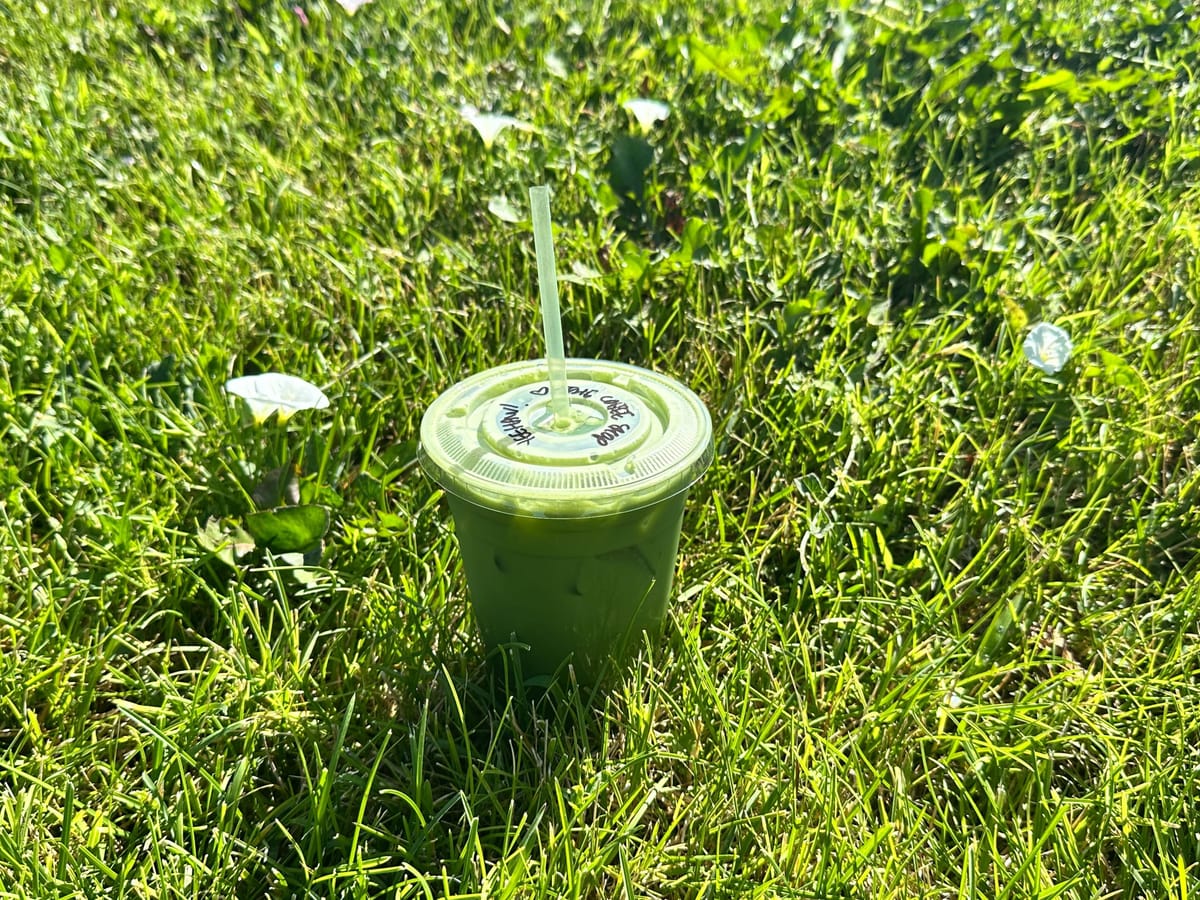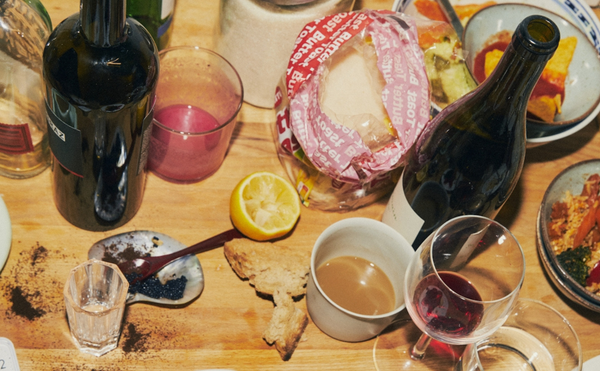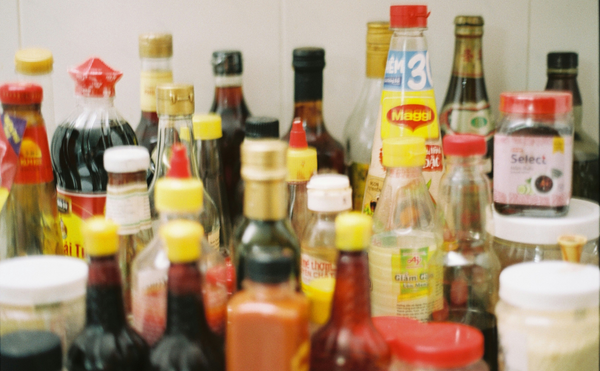Can Matcha Fix Us?
How green tea lattes became the antidote to overstimulation.

“This is my kitchen and this is my fiancé,” says Travis Barker in an Architectural Digest tour of his modernist home. He’s decked out in a black leather onesie that looks like it came straight from The Matrix wardrobe department. Turning to Kourtney Kardashian, who is perched angelically on the kitchen bench, he asks, “Baby, what are you drinking?”
She’s sipping Barker’s “famous” matcha. The camera lovingly pans over his meticulously organized spices, powdered green tea leaves, and a matte black Fellow gooseneck kettle, offering the unspoken promise that you too can be a famous rock star with an enviable net worth — all while maintaining a perfectly regulated nervous system.
That serene tableau wasn’t just lifestyle porn; it was a prophecy. Published in 2022, Barker’s tranquil video was a pitstop on the road to matcha everything, everywhere, all at once. Condensing plastic cups of sage green milk — doctored up with oat foam, brown butter, and strawberry compote — really are all around us now. In 2024, the U.S. matcha market racked up $478.8 million, with projections estimating it’ll reach $762.6 million by 2030.




